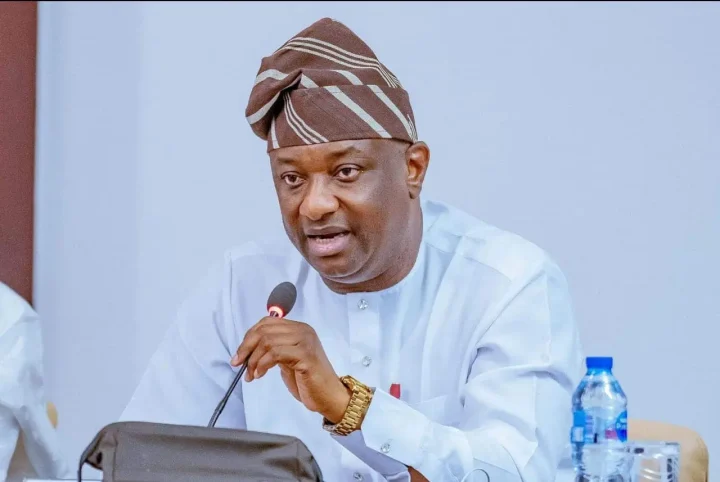Powering Nigeria's Future: How to fix broken promise of mini-grids
In the small village of Egororebet, just outside Jos, a solar-powered mini-grid hums at dusk. But instead of glowing homes and bustling businesses, the panels cast shadows over empty wires. The batteries died years ago. Families still burn kerosene lamps. The community’s dream of electricity? A flicker, then darkness.
This scene repeats across Nigeria, where dozens of government and donor-funded mini-grids – decentralised energy systems meant to power rural communities – are operating far below capacity or lying abandoned. The issue isn’t just a lack of investment or sunshine. It’s a web of systemic failures: shoddy construction by contractors, neglected maintenance, and a lack of accountability that leaves communities stranded despite their willingness to pay for better service.
During visits to 40 minigrid sites, a pattern emerged. Contractors often cut corners – using second-hand solar panels, substandard wiring, or poor earthing that risks fires – doing just enough to scale the minimum standards. Systems were installed and commissioned without proper documentation, such as the commissioning test results, as-built single line diagrams and layout drawings, key equipment manuals, key maintenance spares, and operations and maintenance schedules. Panels went uncleaned for months, dust slashing energy output. Minor faults, like a tripped inverter or loose connection, became permanent failures because no one took responsibility.
As Nigeria races to electrify 25 million people by 2030, these stalled projects offer urgent lessons. Here’s how to turn them around – and ensure future mini-grids don’t suffer the same fate.
Most mini-grids start with fanfare: solar panels rise, batteries are installed, and communities celebrate. But within years, systems falter.
Lead-acid batteries – cheap but fragile – die under Nigeria’s heat and irregular maintenance. Users, struggling to pay high tariffs, disconnect or bypass their meters. Others never plug in because of the limited capacity of the mini-grid deployed to the community. Many others are not connected for productive use because their equipment is still fossil fuel-powered, and cannot afford to retrofit to electrically powered alternative.
But the rot often starts earlier. Contractors, eager to win bids, sometimes use second-hand equipment or skip critical steps like proper earthing systems, adequately sized cables, and protective devices, leaving systems vulnerable to damage. Many installations lacked even basic O&M plans. No one was hired to clean panels or fix faults. “The contractors disappeared after commissioning,” laments a village head in Kaduna. Worse, one project in Ogun State failed because corroded and reused cables caused a fire outbreak.
The result? Millions of dollars in stranded assets and villages slipping back into energy poverty.
1. Hold Contractors Accountable
Problem: Poor workmanship and shortcuts plague projects.
Solutions:
Problem: Cheap, fragile tech fails under harsh realities.
Solutions:
Problem: No O&M strategy leads to collapse.
Solutions:
Mandatory O&M funds: Dedicate 20 per cent of project budgets to maintenance. Kenya’s mini-grid rules require this, ensuring cash for repairs.
Clean energy franchises: Partner with local shops to sell spare parts and offer repairs. A pilot in Sokoto uses motorcycle taxis to dispatch technicians.
Community task forces: Assign villagers to clean panels monthly and report faults. A small stipend or free power can incentivise this.
Carbon Credits: Access to green bonds, finances, and bonuses for carbon mitigation
Metering: Adequate and secure metering infrastructure to guarantee payment collection and reduction in energy theft
Problem: Tariffs don’t match realities.
Solutions:
Problem: Projects imposed from above breed distrust.
Solutions:
Nigeria’s Rural Electrification Agency (REA) and state governments must:
To truly thrive, mini-grids must go beyond basic lighting – they should power industries that drive prosperity. Two sectors with transformative potential:
Nigeria’s tech sector is booming, but unreliable power stifles innovation. Mini-grids can unlock rural digital economies:
Agriculture employs 70 per cent of Nigerians but suffers from post-harvest losses and low-value exports. Mini-grids can revolutionise this:
- Value-Added Products: Install electric mills, grinders, or oil presses to process crops locally. A shea butter cooperative in Niger State, powered by a minigrid, now exports directly to global markets.
- Policy Support: Offer tax breaks for agribusinesses using mini-grids and fund pilot projects linking farmers to clean energy.
Functional mini-grids aren’t just about lightbulbs. They’re about students studying after sunset, clinics refrigerating vaccines, and farmers irrigating fields. When mini-grids work, they lift entire economies.
But sustainability requires humility. “We’ve learned that installing a mini-grid is the easiest part,” says a developer in Niger State. “Keeping it alive is the real test.”
Nigeria’s mini-grid struggles are fixable – with accountable contractors, smart maintenance plans, and communities in the driver’s seat. The goal isn’t just to build more systems but to nurture them.
Donors and officials must shift from counting megawatts to measuring impact: How many businesses opened? How many batteries survived five years? How many families still pay bills?
The world is watching. If Nigeria cracks this puzzle, it won’t just electrify villages – it’ll light a path for the 600 million Africans still living in the dark.
About the Author: Dr Tobi Oluwatola is the CEO of TAO Energy and an energy access advocate working on decentralised renewable solutions in West Africa.










